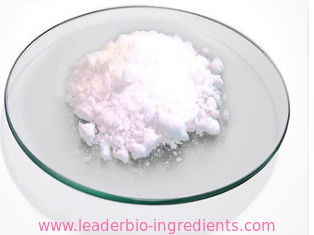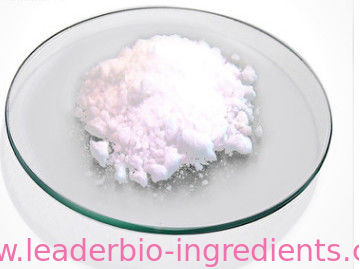
China Northwest Factory Manufacturer 4-Tert-Butylcyclohexanone CAS 98-53-3 For stock delivery
-
Purity99.9%
-
UseHealth Care
-
OriginChina
-
Package1KG/Tin 25KG/Drum*Carton
-
ManufacturerXI'AN LEADER BIOCHEMICAL ENGINEERING CO.,LTD
-
Place of OriginCHINA
-
Brand NameLeader
-
CertificationISO,GMP,SGS,HALA,KOSER,HACCP
-
Model NumberLD
-
Minimum Order Quantity25KGS
-
PriceNegotiate Depend on order quantity
-
Packaging Details25KG/Drum
-
Delivery Time2-3 working days
-
Payment TermsWestern Union, MoneyGram, T/T, L/C
-
Supply Ability10MTS/Month
China Northwest Factory Manufacturer 4-Tert-Butylcyclohexanone CAS 98-53-3 For stock delivery
| 4-tert-Butylcyclohexanone Basic information |
| Product Name: | 4-tert-Butylcyclohexanone |
| Synonyms: | 98-53-3;4-tert-Butylcyclohexanone, 99% 100GR;4-TERT-BUTYLCYCLOHEXANONE;P-TERT-BUTYLCYCLOHEXANONE;PARA TERTIARY BUTYL CYCLOHEXANONE;TIMTEC-BB SBB007656;4CO;AKOS BBS-00000687 |
| CAS: | 98-53-3 |
| MF: | C10H18O |
| MW: | 154.25 |
| EINECS: | 202-678-5 |
| Product Categories: | Halogenated Heterocycles ,Pyrimidines;Carbonyl Compounds;Liquid Crystal intermediates;C10;Ketones |
| Mol File: | 98-53-3.mol |
| 4-tert-Butylcyclohexanone Chemical Properties |
| Melting point | 47-50 °C(lit.) |
| Boiling point | 113-116 °C20 mm Hg(lit.) |
| density | 0.893 |
| refractive index | 1.4570 (estimate) |
| Fp | 205 °F |
| storage temp. | 2-8°C |
| form | Crystalline Powder |
| color | White to almost white |
| Water Solubility | Soluble in alcohol, ethanol (0.5g/10 mL). Insoluble in water. |
| BRN | 507309 |
| InChIKey | YKFKEYKJGVSEIX-UHFFFAOYSA-N |
| CAS DataBase Reference | 98-53-3(CAS DataBase Reference) |
| NIST Chemistry Reference | Cyclohexanone, 4-(1,1-dimethylethyl)-(98-53-3) |
| EPA Substance Registry System | Cyclohexanone, 4-(1,1-dimethylethyl)- (98-53-3) |
| Safety Information |
| Hazard Codes | Xi |
| Risk Statements | 36/37/38 |
| Safety Statements | 26-36 |
| WGK Germany | 2 |
| RTECS | GW1140000 |
| TSCA | Yes |
| HS Code | 29142990 |
| toxicity | Both the acute oral LD50 value in rats and the acute dermal LD50 value in rabbits were reported to be 5 g/kg |
| MSDS Information |
| Provider | Language |
|---|---|
| SigmaAldrich | English |
| ACROS | English |
| ALFA | English |
| 4-tert-Butylcyclohexanone Usage And Synthesis |
| Chemical Properties | WHITE TO ALMOST WHITE CRYSTALLINE POWDER |
| Occurrence | Has apparently not been reported to occur in nature. |
| Preparation | By hydrogenation of p-ferr-butylphenol. Care must be taken that no free p-tert-butylphenol remains, because it is a sensitizer and depigmenting agent(Opdyke, 1974). |
| Preparation | N-Chlorosuccinimide (NCS) (8.0 g, 0.060 mol) and toluene (200 mL) were cooled to 0 C° in a 1-L, threenecked, round-bottomed flask equipped with a mechanical stirrer, a thermometer, a dropping funnel, and an argon inlet tube. Dimethyl sulfoxide (6.0 mL, 0.10 mol) was added and the mixture was cooled to -25 C° using a tetrachloromethane/dryice bath. A solution of 4-tert-butylcyclohexanol (6.24 g, 0.04 mol; mixture of E and Z isomers) in toluene (40 mL) was added dropwise over 5 min, stirring was continued for 2 h at -25 C°, and then a solution of tri (6.0 g, 0.06 mol) in toluene (10 mL) was added dropwise over 3 min. The cooling bath was removed, and, after 5 min, diethyl r (400 mL) was added. The organic phase was washed with 1% aq. hydrochloric acid (100 mL) and then with water (2 × 100 mL), and dried over anhydrous magnesium sulfate. The solvents were evaporated under reduced pressure, and the residue was transferred to a 50-mL, round-bottomed flask and bulb-to-bulb distilled at 120 C° (25 mmHg) to yield 5.72 g (93%) of 4-tertbutylcyclohexanone 1794; mp 41–45 C°. Recrystallization from petroleum r at -20 C° gave an 88% recovery of 1794 with mp 45–46 C°. |
| Synthesis Reference(s) | Chemistry Letters, 24, p. 507, 1995 Journal of the American Chemical Society, 94, p. 7586, 1972 DOI: 10.1021/ja00776a056 Tetrahedron Letters, 16, p. 3775, 1975 |
| Purification Methods | Purify it via the semicarbazone (crystallised from EtOH with m 203-205o), hydrolyse this with dilute HCl and steam distil it. The distillate is extracted into Et2O, dried, evaporated and the residue is recrystallised from pentane, aqueous EtOH or EtOH [Houlihan J Org Chem 27 3860 1962]. The oxime recrystallises from 1,2-dichloropropane and has m 137.5-138.5o. [Harvill et al. J Org Chem 15 58 1950, Beilstein 7 IV 82.] |
| 4-tert-Butylcyclohexanone Preparation Products And Raw materials |
| Raw materials | DCM-->Magnesium sulfate-->Hydrogen peroxide-->Ammonium chloride-->Hydrogen bromide-->N-Bromosuccinimide-->Sodium bisulfite-->Aluminum oxide-->Chromium(VI) oxide-->SILICIC ACID-->2,2,6,6-Tetramethylpiperidinooxy-->Sodium bromite-->4-tert-Butylcyclohexanol |
| Preparation Products | Cyclohexanol,1-(1,1-dimethylethyl)- |
